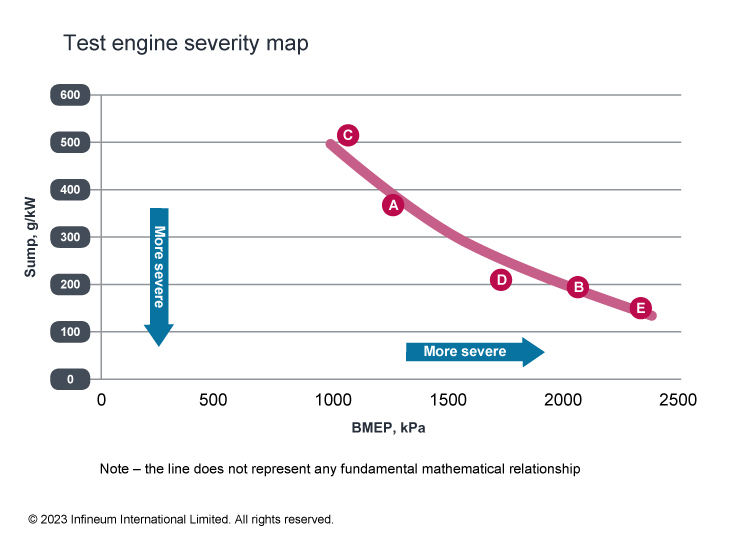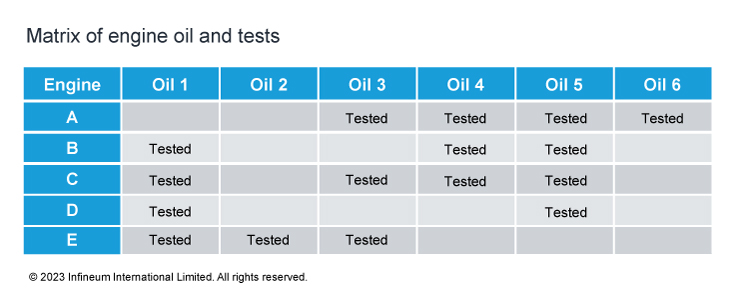Gas Engines
Smooth operation for over 90,000 hours
28 August 2024
04 July 2023
Predicting oil performance in stationary natural gas reciprocating engines for improved planning

The need to keep highly efficient natural gas reciprocating internal combustion engines in service for longer to help improve productivity while also reducing operational costs is increasingly important to end users. Following his paper presentation at the CIMAC Congress, Infineum Lubricants Technologist, Fred Girshick, explains how a new model* could help to predict the life of stationary gas engine oils in various engine models.
It is well understood that the same oil in different natural gas reciprocating internal combustion engine (ICE) models, or different engine oils in the same model engine, can experience varying rates of oil degradation. This rate of degradation impacts the oil drain interval (ODI), which is based on the condemning limits for certain parameters set by the engine OEM.
Since it can be difficult to project how long an oil will last by using used oil analyses alone, Infineum set out to develop an oil life prediction model.
This can be used to help anticipate the life of an engine oil, which is useful in terms of oil selection, maintenance scheduling and budget planning.
The performance of an oil in a reciprocating ICE depends not only on the quality of the oil but also on the design of the engine, fuel composition, and operating parameters for example, air:fuel ratio, load, temperatures, and rate of oil consumption. We wanted to use data from our extensive field trials to assess a number of engine oils in different reciprocating ICE models to gain a good understanding of how engine design and operating conditions affect performance.
Our study gathered together data for six stationary gas engine oils in five natural gas reciprocating ICE models. To assess engine severity we used two well understood measures: Brake Mean Effective Pressure (BMEP) and sump size expressed as mass of oil divided by power. Using these parameters we were able to map our five test engines (A -E) in terms of severity. We had expected that as the severity of the combustion process increased (i.e. higher BMEP) the sump size would increase to compensate. However, quite the opposite can be seen below, with both measures increasing severity in a fairly coordinated manner.

Clearly this is only a two-dimensional representation of engine severity, which in reality is far more complex. However, in this study, fuel composition was held constant by using pipeline quality gas while other parameters, such as air:fuel ratio, loading factor, and duty cycle, could not be controlled, since these were live field trials.
The six engine oils were all formulated with API Group II base oils to SAE 40 viscosity grade with two oils formulated with higher base number and ash levels than the other four.
We carried out one or more full length field trial for each oil and engine combination, according to that engine manufacturer’s protocol. While not every oil was tested in every engine model, the data were sufficient to explore ‘same oil/different engine’ and ‘different oil/same engine’ combinations.

In all, 40 test combinations were used. What we have generated as a result of these analyses is a model that allows operators, oil marketers, and service providers to predict expected oil performance.
Oxidation and nitration, which lead to acid formation, are good indicators of oil degradation, since they can be the first step towards other forms of degradation, such as acid number increase, base number decrease, deposit formation, and certain types of wear.
Engine manufacturers set condemning limits for oxidation and nitration (for example 20, 30, 40 Absorbance per cm (A/cm)), usually the same limit for both parameters although typically engine designs and air:fuel ratios determine that one will be greater than the other. This means that the same oil in two engine models of equal severity from different manufacturers will appear to have different lifetimes. For our study, engine manufacturers’ limits were not to be applied, but this is very difficult to realise in practice as operators have been trained to change oils at the specified limits.
We were able to assess the nitration and oxidation performance of different oils in the same engine. Then, to check that the engine comparisons were robust with respect to lubricant technology, we tested the same oil in different engines. Although none of the oils were run in all five engine models, there was sufficient overlap to piece together the extended comparison.
The ratio of nitration to oxidation is most often explained by air:fuel ratio, with near stoichiometric producing higher nitration than oxidation, lean-burn engines producing nearly equal or slightly less nitration than oxidation, and very/ultra lean burn producing much less nitration than oxidation. Nitration results were generally low and less than oxidation and in agreement with expectations based on the air:fuel ratios of the engines tested.
ASTM D2896 was chosen to assess base number (BN) because it had the highest precision of the four acid-base methods available. To put the oils on an equal scale, and to help emphasise the differences, BN decrease rather than absolute BN was chosen as the measure of engine protection. It appears that engine protection is determined by the absolute amount of base in the engine at any given time, irrespective of where the oil started. None of the acid-base parameters in our tests showed any alarming results and were not the critical factors determining oil life.
Wear in a gas engine field trial is measured in several ways: increase of wear elements in used oil samples, visual inspection and rating of parts, and physical measurements. Our assessment examined iron content for all oils in all engine models. While there were differences, any high values and steep trend lines were traced back to either mechanical problems unrelated to engine oil or the break in of new parts at the start-of-test.
We observed that different engine models place different amounts and kinds of severity on the engine oil. For example, one engine model might be limited by the rate of oil oxidation, another by the rate of oil nitration or by the rate of BN depletion. It is however very rare for a natural gas reciprocating ICE to be limited by (classic abrasive) wear, as engines of this size are highly hydrodynamic. The most common factor leading to an oil change in lean burn or ultra lean burn engines was oxidation, for near-stoichiometric (rich burn) engines it was nitration. Occasionally, BN depletion was the cause for condemning the oil - usually the result of an engine manufacturer’s stated limit.
At the same time, various oils exhibit different performance characteristics, even in the same model engine under the same operating conditions. Our studies have found that in general, if one oil performs better than another in a certain engine, it will usually also perform better in other engine models.
The comparisons made in our study can be used to develop expectations and norms for engine and oil performance.
In our view, the ability to predict that the oil drain interval in a specific engine model will be a certain factor longer or shorter than another engine model could be valuable in influencing oil selection and maintenance scheduling decisions.
Further work will be undertaken to expand this dataset and analysis to increase precision, add additional oils and engine models, and incorporate other measures of engine performance, such as deposit ratings and wear measurements.
* This predictive model of oil life should be taken as an informative guideline and is no substitute for a proper used oil analysis programme.
Sign up to receive monthly updates via email